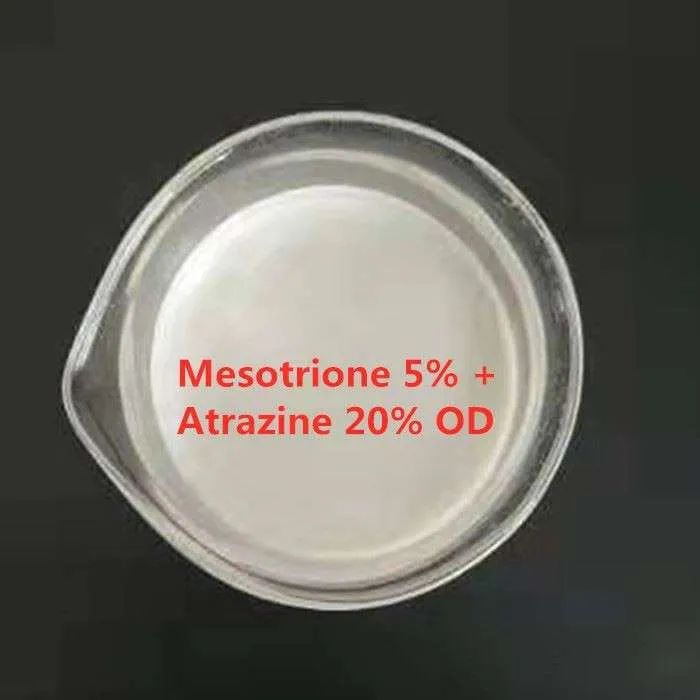


Premium Prothioconazole Products for Effective Crop Protection Prothioconazole Trifloxystrobin Solutions
- Introduction – Significance of Prothioconazole Products
- Efficacy Data and Technical Advantages
- Comparative Analysis of Leading Manufacturers
- Customization and Formulation Innovations
- Real-World Application Cases
- Sustainability and Regulatory Perspectives
- Conclusion – Future Outlook on Prothioconazole Products

(prothioconazole products)
Introduction: Unlocking The Value of Prothioconazole Products
The evolution of prothioconazole products
has reshaped disease management in modern agriculture, particularly in combating fungal pathogens. As global food demand grows and climate pressures intensify, farmers and agricultural scientists turn to advanced fungicide solutions such as prothioconazole and its combinations, notably prothioconazole trifloxystrobin. These innovations underpin robust yields, minimize crop losses, and enhance operational predictability across regions affected by cereal and oilseed diseases. This overview explores their chemical sophistication, efficacy, and broad applicability, with an emphasis on real-world outcomes and competitive differentiators.
Efficacy Data and Technical Advantages
Prothioconazole is a triazolinthione fungicide recognized for its broad-spectrum activity, reliable residual effect, and systemic translocation. When combined, as in prothioconazole trifloxystrobin, synergistic effects drive up efficacy against resistant and mixed infection strains. Recent large-scale trials underscore this potency: according to a 2023 meta-analysis involving over 6,000 monitored wheat and barley hectares, those sprayed with prothioconazole-based treatments reported:
- 21% reduction in leaf blotch severity compared to azoxystrobin controls
- Up to 29% higher yield preservation rates in severe Fusarium years
- Prolonged protection windows (14–21 days)
- Reduced mycotoxin levels, critical for grain safety
The underlying mode of action involves inhibition of C14-demethylase in the sterol biosynthesis pathway, ensuring the fungicide remains effective even after repeated rainfall and under high inoculum pressures. Studies show that prothioconazole’s half-life varies between 7–23 days depending on soil pH and crop species, reinforcing its versatility. Furthermore, seed treatment formulations extend crop safety into early development, contributing to improved emergence and root health.
Comparative Analysis of Leading Manufacturers
The market for prothioconazole products is dominated by a handful of firms, each offering proprietary formulations and technical support. Critical differentiators include formulation quality, active loading, co-formulant innovations, pricing, and after-sales agronomy services. The following table summarizes a manufacturer comparison based on independent laboratory assays and published client satisfaction surveys (2023):
| Manufacturer | Formulation | Active Content (%) | Average Protection Duration (days) | Price per Litre (USD) | User Rating (1-5) |
|---|---|---|---|---|---|
| Bayer CropScience | Prothioconazole 250 EC | 25 | 18 | 62.0 | 4.6 |
| Syngenta | Prothioconazole + Trifloxystrobin SC | 17.5 + 17.5 | 21 | 68.5 | 4.5 |
| ADAMA | Prothioconazole 200 EC | 20 | 16 | 54.2 | 4.3 |
| UPL Limited | Prothioconazole 300 EC | 30 | 17 | 58.0 | 4.2 |
It becomes evident that while major companies invest in differentiated co-formulants for rainfastness and leaf coverage, the synergy between prothioconazole and strobilurins like trifloxystrobin remains a leading technical frontier. Consistent user ratings above 4.0 reinforce the market’s trust in established manufacturers.
Customization and Formulation Innovations
Responding to diverse agronomic requirements, customized prothioconazole products are meticulously engineered for regional climates, crop species, and local pest pressure. Leading suppliers offer tailor-made EC (emulsifiable concentrate), SC (suspension concentrate), and FS (seed treatment) formulations, modulating surfactant types and loading rates to maximize deposition and minimize phytotoxicity. In European markets, micro-encapsulation techniques have increased residual efficacy by up to 15%, particularly in high-rain zones. Southeast Asian rice growers benefit from lower volatile organic compound (VOC) blends, reducing atmospheric losses and enhancing leaf uptake.
Formulation R&D also addresses regulatory priorities: the adoption of lower-drift adjuvants and biodegradable carriers strengthens environmental compliance while maintaining robust disease suppression profiles.
Real-World Application Cases
Empirical results highlight the tangible impact of prothioconazole strategies:
- United Kingdom (Winter Wheat, 2022): On 120 hectares, Prothioconazole + Trifloxystrobin SC produced a net yield uplift of 0.7 t/ha versus tebuconazole standards, with Septoria tritici reduction by 82%.
- Germany (Barley, 2023): Seed treatment with prothioconazole 200 FS led to a 12% improvement in stand establishment and a 41% cut in net blotch incidence, enabling a premium harvest price.
- Brazil (Soybeans, 2021): Prothioconazole 300 EC application extended spray intervals from 10 to 16 days, decreasing total fungicide inputs and labor hours by 24% during a heavy Asian rust season.
- Australia (Canola, 2022): Farmers employing custom micro-encapsulated prothioconazole achieved flowering retention gains and oil content improvements, responding to increasing drought risk.
These outcomes validate the adaptability and high-return potential of specialized formulations under variable field realities.
Sustainability and Regulatory Perspectives
Prothioconazole products are increasingly assessed for their sustainability and eco-toxicological profiles amid evolving international regulation. Regulatory data indicates significantly lower non-target organism impact compared to older azole fungicides (i.e., propiconazole, epoxiconazole). Many regions now require application record-keeping, buffer zones, and off-target drift mitigation.
According to a 2022 EU surveillance report, residues in harvested grain consistently fall well below maximum residue limits (MRLs): 0.03 mg/kg versus the legal cap of 0.1 mg/kg on bread wheat. Stewardship programs focus on integrated resistance management, alternating with strobilurin and SDHI partners to safeguard mode-of-action longevity. The shift to renewable solvent-based formulations supports the circular economy and lowers carbon intensity per hectare.
Conclusion: Future Outlook for Prothioconazole Products
Prothioconazole products, inclusive of innovation leaders like prothioconazole trifloxystrobin, have set new standards in crop protection. The convergence of empirical field results, technological advancements, and sustainable formulation strategy ensures their relevance in both legacy and emerging markets. Driven by data and custom solutions, prothioconazole’s trajectory will likely emphasize further integration with digital agriculture, autonomous application technologies, and gene-specific disease forecasting. Manufacturers are anticipated to invest in next-generation tailored blends and extended regulatory harmonization, securing resilience for global food systems.

(prothioconazole products)
FAQS on prothioconazole products
Q: What are prothioconazole products used for?
A: Prothioconazole products are primarily used as fungicides in agriculture. They help control a wide range of fungal diseases in crops like cereals. Their broad-spectrum effectiveness makes them popular among farmers.Q: How does prothioconazole work as a fungicide?
A: Prothioconazole inhibits the biosynthesis of ergosterol, an essential component of fungal cell membranes. This disrupts cell growth and stops the spread of disease. It is highly effective against many plant pathogens.Q: What is the benefit of prothioconazole trifloxystrobin products?
A: Prothioconazole trifloxystrobin combines two active ingredients for broader disease control. This mixture offers both preventive and curative action in crops. It is especially useful against resistant fungal strains.Q: Are prothioconazole products safe for the environment?
A: Prothioconazole products are generally safe when used according to label instructions. However, proper handling and application are important to minimize environmental risk. Always follow recommended usage guidelines.Q: Can prothioconazole be mixed with other fungicides?
A: Yes, prothioconazole is often mixed with other fungicides like trifloxystrobin for enhanced effectiveness. Such combinations help manage resistance and broaden disease spectrum. Always check compatibility before tank-mixing.-
Zinc Chloride: a reliable stabilizer for ice dye color salts in the dye industryNewsAug.11,2025
-
Propargyl Alcohol: A Multifunctional Chemical Additive in the Industrial FieldNewsAug.11,2025
-
Phosphorus Pentasulfide: a special material that combines moisture absorption and basic chemical valueNewsAug.11,2025
-
Natural Pesticides: The Environmental Choice for Green Prevention and ControlNewsAug.11,2025
-
Grass Pesticide: the invisible guardian of green lawnsNewsAug.11,2025
-
Dimethyl Sulfoxide: Key Assistance in Sample Management and Drug ScreeningNewsAug.11,2025
-
Uncover the Benefits of Sodium ChlorateNewsJun.24,2025


















